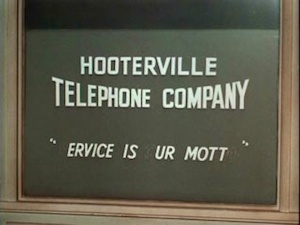
Incumbents are still king.
The U.S. senate just joined the house in approving a new $50 million ($10 million a year for five years) “Rural Gigabit Network Pilot Program”. It’s in the farm bill just sent on for the president’s approval (or not). Unlike current rural broadband subsidy programs, it allows grants in addition to loans and doesn’t particularly favor incumbents.
An eligible applicant is one that does “not already provide ultra-high speed service to a rural area within any State in the proposed service territory”. Ultra-high speed service is defined in the bill as “1 gigabit per second downstream transmission capacity”. Only rural communities – 20,000 inhabitants or fewer – where there’s no existing gigabit service are eligible.
The program is actually more expansive than the original version in the bill passed by the senate but rejected by the house – there’s no longer a five project maximum and a limit of one per state.
Other than the gigabit program, though, federal rural broadband subsidies won’t change very much. Like the version passed by the house last summer, the compromise farm bill is heavily weighted towards the status quo: the core broadband subsidy program administered by the Rural Utilities Service (RUS) will continue at the $25 million a year level, only allow loans and will generally protect and fund incumbent service providers. It also lets incumbents challenge projects proposed by would-be competitors and sets a minimum service level of 4 Mbps down/1 Mbps up.
The rural gigabit community program will be worth watching. It’s not a lot of money – one fiber-to-the-home project can chew through $10 million in a hurry – but it’s more than nothing, which is what the federal government is doing now.
Text of compromise 2014 farm bill.
Current law governing federal rural broadband subsidies – the new language amends what’s already there.
